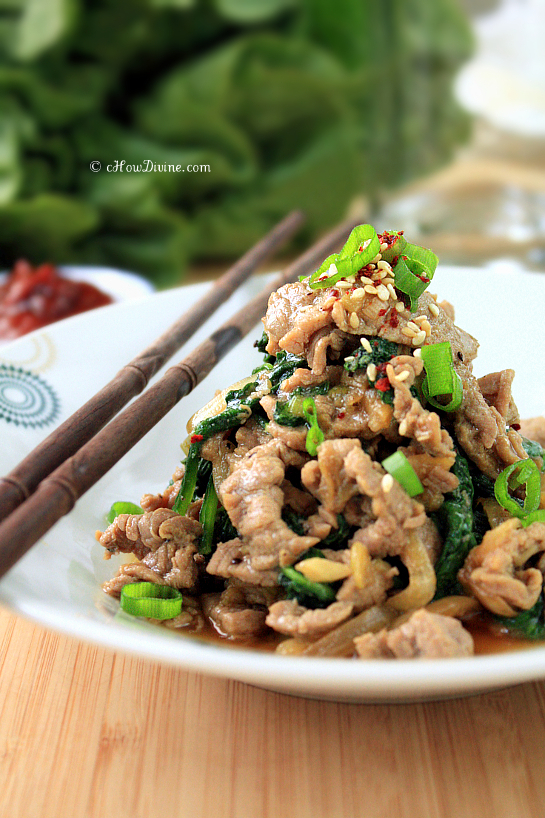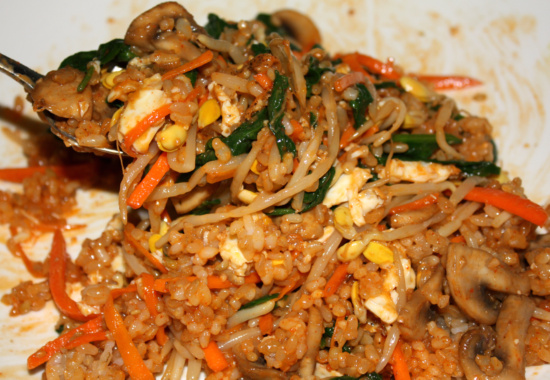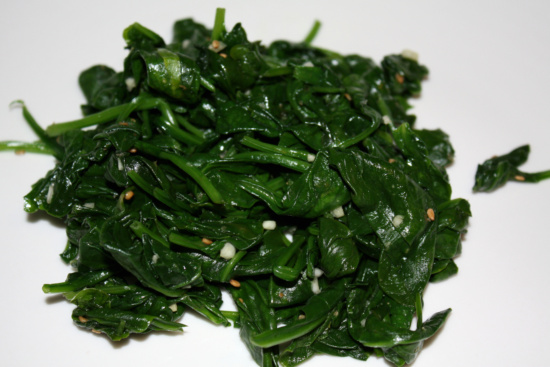I decided to cook some red meat this week. I’m one of those people who need some animal protein – red meat in particular – to feel “all-there.” My body just doesn’t seem to absorb iron from plants efficiently. Whatever the reason, I get horribly iron-deficient. Dark under-eye circles. Fatigue. Headaches. Muscle aches. A whole gamut of symptoms I won’t bore you with. I just eat a little of red meat once a week for a few weeks. And voilà. Symptoms gone.
Vegetarian Bibimbap with Gochujang Sauce
Cooking in a tiny NYC kitchen can be a challenge. Most of the kitchens in the home renovation magazines that are described as tiny are palatial compared to a small NYC kitchen. I guess it’s all relative, because some NYCers would say our kitchen is “roomy”. We have most of our bowls and plates still packed in boxes, because we just don’t have the storage for them. We make due with 3 bowls (my husband broke one), 3 salad plates (ditto on the husband), and 4 dinner plates. So nope; I’m not exaggerating when I say TINY.
When there is a lot of prep work involved, it’s a challenge – not only because of the lack of space, but also because my dinnerware often doubles as my prep bowls. I wasn’t surprised when I ran out of my bowls prepping for this Bibimbap. So I ended up serving this dish on plates. Bibimbap, which is normally a “rice bowl”, ended up being a “rice plate”. But it was so satisfying and delicious just the same…
Continue Reading Vegetarian Bibimbap with Gochujang Sauce . . .
Shigumchi Namul (Korean Seasoned Spinach)
Shigumchi Namul or Sigumchi Namul is an integral part of many popular Korean dishes. Yes; you can most certainly serve it on its own as a respectable banchan (side dish). But Shigumchi Namul is much more than that. You can bring color, flavor, and nutrients to many main dishes simply by adding it as an ingredient. Bibimbap (mixed rice), Kimbap (rolled rice in laver), and Japchae (mixed or stir-fried cellophane noodles) are the first to come to mind.
Shigumchi Namul is a classic Korean side dish. But I prepare it a bit differently than my foremothers. I water-sauté the spinach instead of boiling it. When you boil the spinach, you have to wait for the water to boil; and after boiling, you have to squeeze out the water from the spinach. I know. It sounds a bit counter-intuitive. But that’s how it’s traditionally done. The water-sauté method saves me a lot of time and energy by allowing me to dispense with those steps. And the end product tastes just as delicious.



